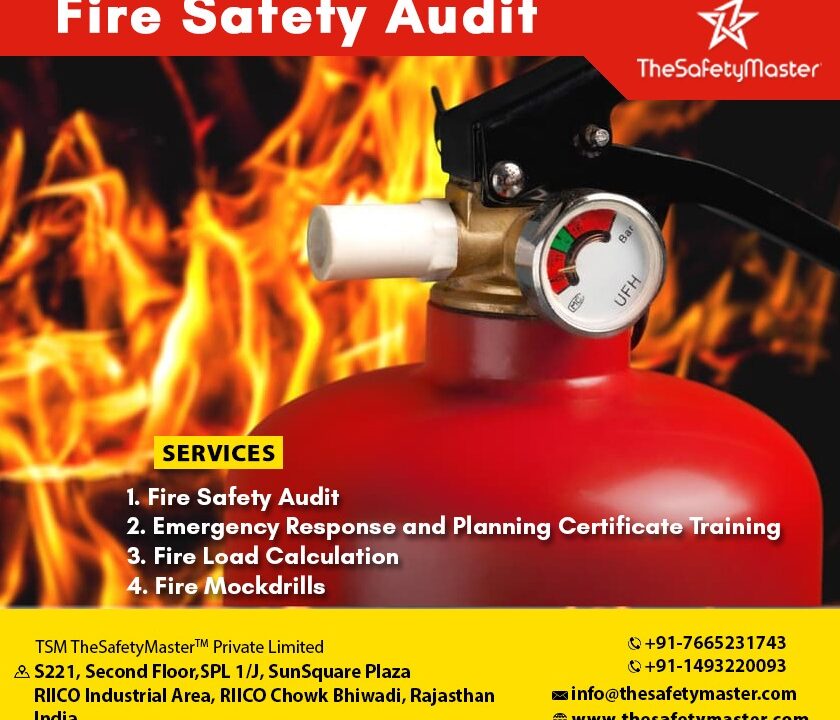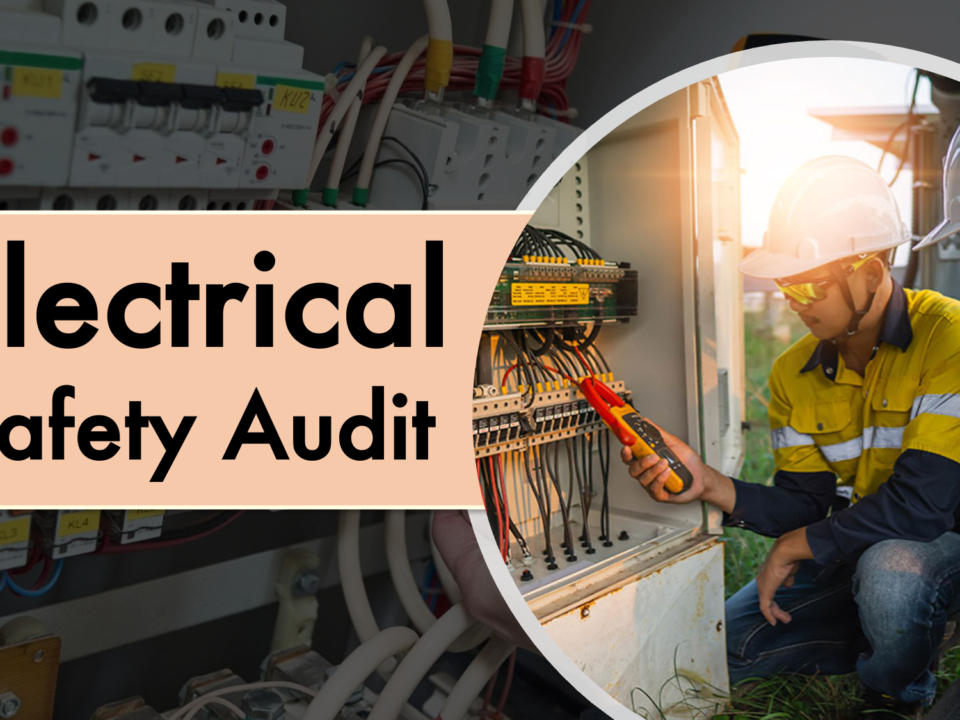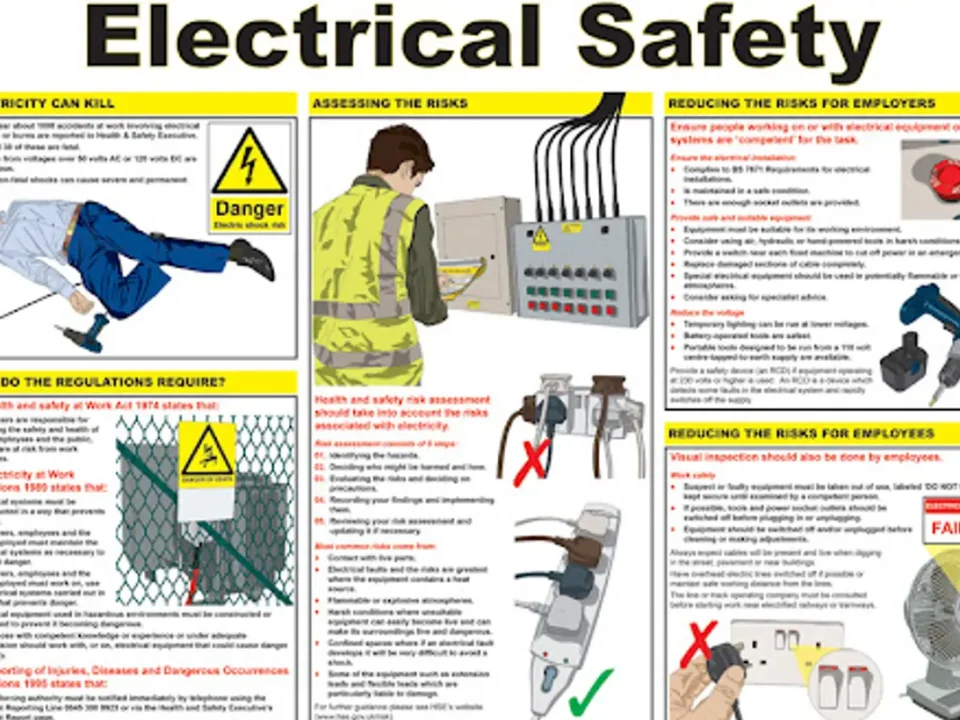Comprehensive Electric Vehicle Manufacturing Facilities Safety Auditing

A Cultural Shift towards Safety Excellence: How BBS Implementation Programs Drive Organizational Success
October 16, 2023
Strengthening Safety Measures: Understanding the Importance of Following BIS14489 Safety Audit Guidelines in Indian Industries
October 17, 2023Comprehensive Electric Vehicle Manufacturing Facilities Safety Auditing
Comprehensive Electric Vehicle Manufacturing Facilities Safety Auditing
Electric vehicle manufacturing facilities pose unique safety risks due to the nature of the technology involved. As electric vehicles become more popular, it is essential for manufacturers to ensure that their facilities prioritize safety and minimize risk for employees and equipment.
A comprehensive safety audit is a critical step in achieving this goal. By identifying potential hazards and risks, understanding compliance regulations, developing an action plan, and implementing best practices for ongoing safety improvements, electric vehicle manufacturers can create a safer workplace for all employees while also optimizing their production processes.
Electric vehicles have become increasingly popular in recent years, prompting a rise in the manufacturing and production of these eco-friendly vehicles. However, with this increase in production comes an added responsibility for ensuring the safety of employees working in electrical vehicle manufacturing facilities. The potential risks involved in electric vehicle manufacturing, such as electrical hazards and chemical exposure, make it necessary to conduct thorough safety audits to minimize these risks.
In this article, we will explore the importance of conducting comprehensive safety audits for electric vehicle manufacturing facilities. We will provide a step-by-step guide on how to prepare for and conduct a comprehensive audit, as well as how to develop an action plan to address identified risks. Additionally, we will examine success stories from companies that have implemented effective safety measures after conducting thorough audits. Our ultimate goal is to emphasize the importance of safety auditing for electric vehicle manufacturing facilities and create awareness regarding best practices for ensuring employee health and well-being.
The Importance of Conducting a Comprehensive Safety Audit
Electric vehicle manufacturing facilities require comprehensive safety audits to ensure that employees are working in a safe environment. The safety audit is an essential process that helps identify potential hazards and risks, offering facility managers and owners the opportunity to implement necessary measures for preventing accidents and injuries. It is important to note that a single accident can have significant financial consequences, which may lead to production downtime, worker’s compensation claims, and lawsuits.
A comprehensive safety audit also helps electric vehicle manufacturing facilities comply with applicable regulations and standards. This ensures that the facility is not only operating safely but also legally. Compliance with these regulations demonstrates the commitment of the facility owners to safety practices, reducing the risk of regulatory fines or penalties. In addition, conducting a comprehensive safety audit promotes good public relations by demonstrating social responsibility while building confidence from employees and consumers in the electric vehicle industry.
Understanding the Risks Involved in Electric Vehicle Manufacturing
Electric vehicle manufacturing involves a variety of complex processes, including battery assembly, motor production, and electronics installation. These processes involve the use of various materials and technologies that create their own set of risks. One of the most significant risks in electric vehicle manufacturing is related to battery technology. Lithium-ion batteries, which are commonly used in electric vehicles, present unique risks such as overheating or fire. This risk increases during the production process where several such batteries are charging simultaneously. Additionally, there is also a risk of exposure to hazardous chemicals used during battery production which can cause respiratory problems or skin irritation. Therefore understanding these risks before conducting a safety audit is critical to developing an effective safety plan for Electric Vehicle Manufacturing Facilities.
Preparing for a Comprehensive Electric Vehicle Manufacturing Facilities Safety Audit
When it comes to conducting a comprehensive safety audit, preparation is key. Before beginning the audit, it’s important to gather all necessary information about the facility and equipment being audited. This includes reviewing any previous safety audits, identifying areas of concern, and ensuring that all necessary permits and licenses are up-to-date.
It’s also essential to assemble a knowledgeable team of auditors who have experience in electric vehicle manufacturing safety. This team should be made up of individuals from various departments within the company, such as production, maintenance, and environmental health and safety. In addition to their expertise in electric vehicle manufacturing safety, these auditors should also possess strong communication skills so that they can effectively convey their findings and recommendations to management.
Once the audit team has been assembled, it’s important to develop a comprehensive audit plan that outlines each step of the auditing process. This plan should include a detailed checklist of items that need to be reviewed during the audit, as well as guidelines for conducting interviews with employees and observing operations throughout the facility.
In addition to creating an audit plan, it’s also important to ensure that all necessary equipment is available for use during the audit. This includes personal protective equipment (PPE) such as hard hats and safety goggles, as well as testing devices such as gas detectors or electrical meters.
By taking these preparatory steps before conducting an electric vehicle manufacturing facilities safety audit, companies can help ensure that their operations are running safely and efficiently while minimizing risk for employees and customers alike.
The Step-by-Step Guide to Conducting a Comprehensive Safety Audit
Conducting a comprehensive safety audit can be a daunting task, but it is crucial for ensuring the safety of employees and compliance with regulations. Here is a step-by-step guide to conducting a comprehensive electric vehicle manufacturing facilities safety audit:
1. Identifying Potential Hazards and Risks
The first step in conducting a comprehensive safety audit is to identify potential hazards and risks associated with the manufacturing process. These may include electrical hazards, chemical exposures, and ergonomic risks. It’s important to work closely with employees and management to ensure all potential hazards are identified.
2. Understanding Compliance Regulations and Standards
In order to conduct an effective safety audit, it’s essential to have an understanding of the compliance regulations and standards that apply to electric vehicle manufacturing facilities. This includes federal, state, and local regulations as well as industry-specific standards.
3. Developing an Action Plan to Address Identified Risks
An action plan should be developed based on the identified hazards and risks in order to address them effectively. This may involve implementing new processes or procedures or investing in new equipment or tools.
4. Implementing Best Practices for Ongoing Safety Improvements
Safety improvements should be an ongoing process rather than a one-time event. Implementing best practices such as regular training sessions, hazard assessments, and continuous improvement initiatives will help ensure ongoing safety improvements.
A comprehensive electric vehicle manufacturing facilities safety audit can be complex but necessary for ensuring employee safety and regulatory compliance.
Identifying Potential Hazards and Risks
Identifying potential hazards and risks is a crucial component of any comprehensive electric vehicle manufacturing facilities safety audit. To ensure the safety of employees, it’s essential to conduct a thorough evaluation of the facility, including all processes and equipment.
Some common hazards in electric vehicle manufacturing facilities include electrical shock, exposure to hazardous chemicals, fire hazards due to lithium-ion battery production, and ergonomic issues from repetitive motions. Proper identification of these risks is necessary before developing an action plan to address them.
Each area of the facility should be evaluated for potential hazards. For instance, during battery production, there may be exposure to hazardous chemicals or thermal runaway events that can cause fires or explosions. In contrast, during assembly line work, ergonomic injuries such as carpal tunnel syndrome may develop over time due to repetitive motions. Identifying these risks is critical in developing preventative measures to mitigate them.
Understanding Compliance Regulations and Standards
Electric vehicle manufacturing facilities operate under a variety of compliance regulations and standards established by local, national, and international governing bodies. These regulations are designed to ensure the safety of workers, protect the environment, and maintain product quality. Understanding these regulations is critical to conducting a comprehensive safety audit of an electric vehicle manufacturing facility.
The most common regulatory framework for electric vehicle manufacturing facilities in the United States is OSHA (Occupational Safety and Health Administration). OSHA sets workplace standards that protect employees from hazardous conditions. Additionally, other regulatory bodies such as the EPA (Environmental Protection Agency) regulate environmental impacts associated with battery production and disposal. International organizations like ISO (International Organization for Standardization) also establish industry-specific standards related to quality management systems.
Developing an Action Plan to Address Identified Risks
Once the potential hazards and risks have been identified through a comprehensive safety audit, the next step is to develop an action plan to address them. This involves analyzing each identified hazard in detail and determining an appropriate solution that mitigates or eliminates its risk altogether.
The action plan should prioritize the identified risks based on their severity level, ensuring that immediate attention is given to those with high risk levels. The plan should also specify the timeline for implementing each solution, detailing the responsible persons who will carry out each task.
It is essential to involve all stakeholders in developing this action plan, including management, employees, safety experts, and other relevant parties. By fostering a collaborative approach towards addressing these risks, it ensures that everyone’s perspectives are considered during the decision-making process.
Implementing Best Practices for Ongoing Safety Improvements
Implementing best practices for ongoing safety improvements is a crucial aspect of maintaining a safe and secure electric vehicle manufacturing facility. One effective approach is to establish a safety committee or team that is responsible for continuously identifying potential hazards, recommending safety improvements, and monitoring ongoing safety performance. The team should consist of representatives from different departments and be led by an experienced safety manager.
In addition to the safety committee, regular training sessions should be conducted to educate employees on safe work practices, emergency procedures, and regulatory compliance standards. These sessions should be tailored to meet the needs of different job roles and the risks associated with each activity. This can include fire drills, evacuation training, first aid training, and hazard communication training among many others.
To ensure that these best practices are being followed consistently across all areas of the facility, regular inspections should be carried out by both internal auditors as well as third-party auditors. These inspections should aim at identifying any lapses in compliance or unsafe working conditions so that corrective measures can be taken immediately. By establishing these best practices and following them consistently over time, electric vehicle manufacturing facilities can create a culture of safety-consciousness among their employees which ultimately leads to fewer accidents or injuries.
The Benefits of Conducting a Comprehensive Safety Audit
Conducting a comprehensive safety audit in electric vehicle manufacturing facilities offers numerous benefits to the company, its employees, and the environment. The most obvious benefit is that it helps identify potential hazards and risks that can cause accidents or harm to employees and the public. Identifying these risks early on allows for effective risk management and prevention of accidents before they occur.
In addition to identifying potential risks, a safety audit also ensures compliance with government regulations and standards. Non-compliance with safety regulations can lead to hefty fines or lawsuits against the company. By conducting regular safety audits, companies can ensure compliance with all applicable laws and standards while also improving overall workplace safety measures.
Another significant benefit of conducting a comprehensive safety audit is improved employee morale. When employees feel safe at work, they are more likely to be productive, motivated, and engaged in their work. A safe work environment also reduces employee absenteeism due to illness or injury caused by workplace hazards.
In conclusion, conducting regular safety audits in electric vehicle manufacturing facilities is crucial for improving overall workplace safety measures while also ensuring compliance with government regulations and standards. A comprehensive safety audit not only identifies potential risks but also protects the health and well-being of employees while reducing absenteeism rates.
Case Studies: Success Stories in Electric Vehicle Manufacturing Facilities Safety Auditing
Several electric vehicle manufacturing facilities have successfully implemented comprehensive safety auditing programs, resulting in significant improvements in worker safety and compliance with regulations. One such success story is Tesla’s Fremont factory in California. The facility conducts regular safety audits, identifies potential hazards, and implements corrective actions to eliminate risks.
As a result of these efforts, Tesla has achieved industry-leading safety performance and maintained an excellent record of compliance with regulatory standards. Additionally, the company has significantly reduced workplace injuries and illnesses while increasing productivity and efficiency.
Another success story is General Motors’ Detroit-Hamtramck Assembly plant. The facility implemented a comprehensive safety auditing program that identified potential hazards and risks throughout the manufacturing process. GM implemented corrective actions to address these issues and make the plant safer for workers.
The result was a significant reduction in workplace injuries and illnesses at the plant. GM also saw improvements in employee engagement, productivity, efficiency, and product quality as a result of its focus on workplace safety.
These case studies demonstrate that implementing comprehensive safety auditing programs can improve worker safety while also benefiting a company’s bottom line by improving productivity, efficiency, product quality, employee engagement, and reducing costs associated with injuries or non-compliance penalties.
Conclusion: Emphasizing the Importance of Safety Auditing for Electric Vehicle Manufacturing Facilities
In conclusion, conducting a comprehensive safety audit for electric vehicle manufacturing facilities is imperative for ensuring the well-being of employees and the environment. By identifying potential hazards and risks, understanding compliance regulations and standards, developing an action plan, and implementing best practices, companies can establish a culture of safety that prioritizes the health and safety of all stakeholders. With proper planning and execution, companies can minimize risk while maximizing efficiency, ultimately contributing to a more sustainable future for all.
At TSM TheSafetyMaster Private Limited we offer following services
TSM TheSafetyMaster® Private Limited
Unit No 221-451-452, SPL1/J, 2nd & 4th Floor, Sunsquare Plaza Complex, RIICO Chowk, Bhiwadi 301019, Rajasthan, India
Phone: +91 1493 22 0093
Mobile: +91 7665231743/9413882016
Email: info@thesafetymaster.com



